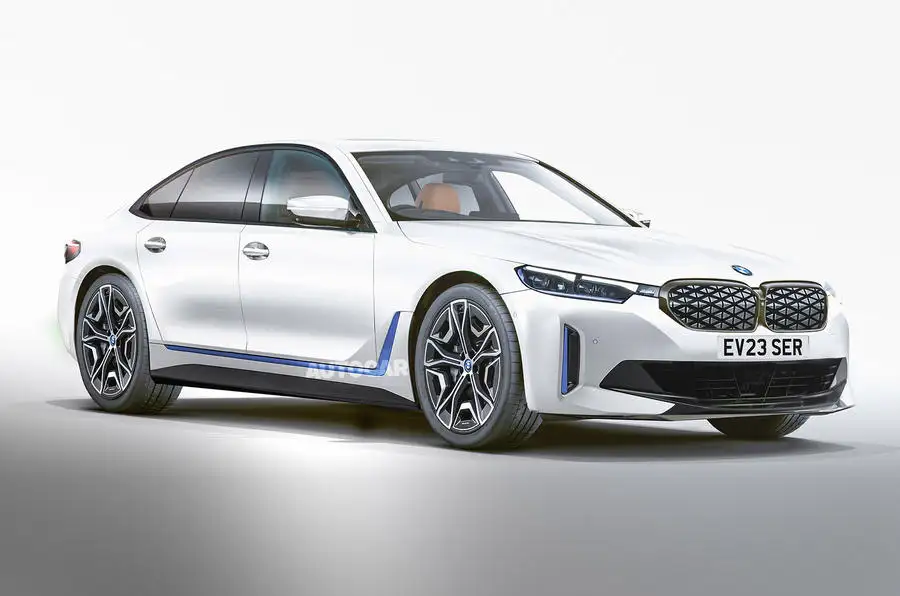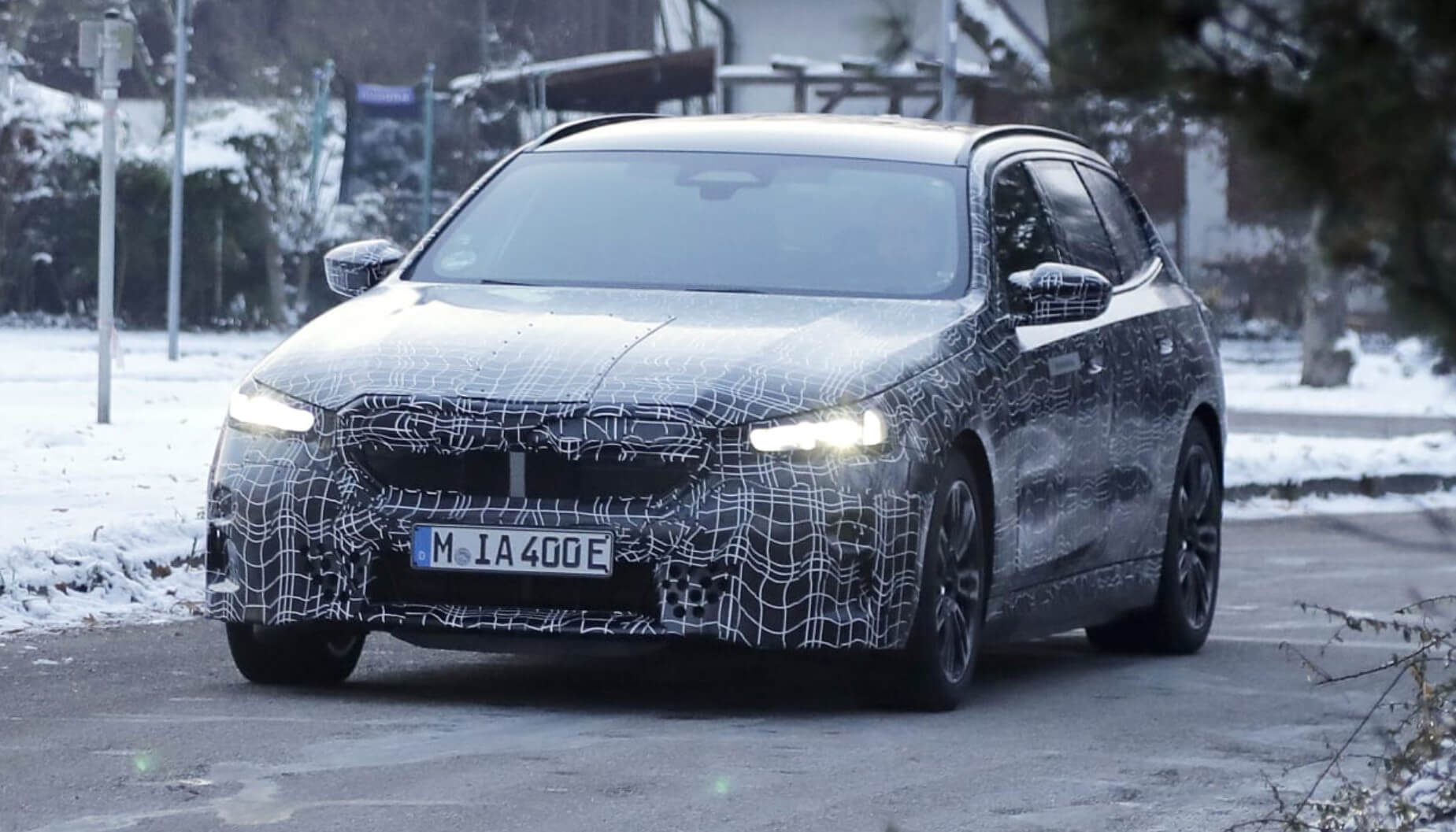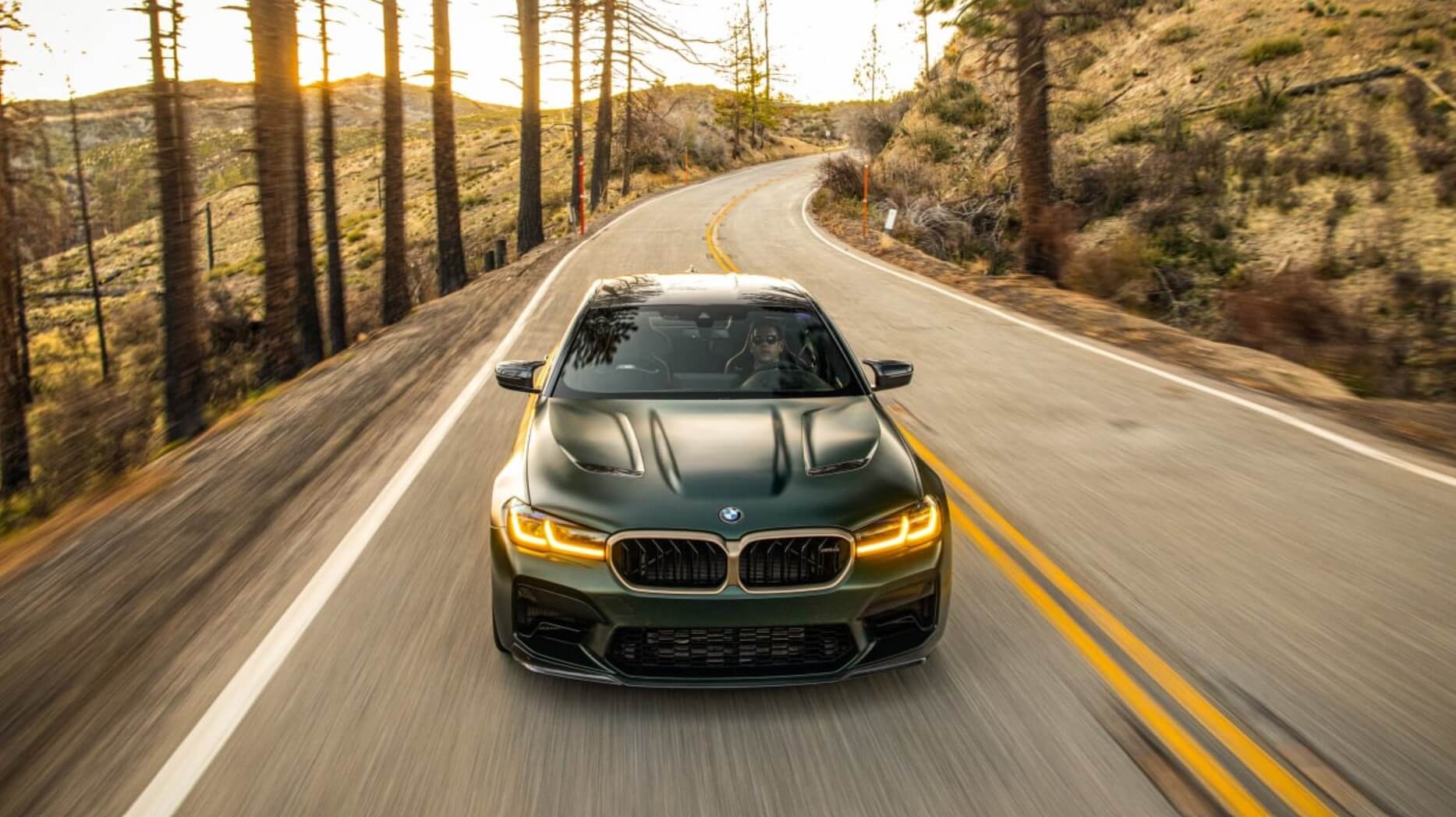All-new electric BMW i5 will be the first electric 5 Series, while combustion and plug-in hybrids make up new 5 Series line-up.
The seventh-generation BMW 5 Series will bow out after seven years in 2023, and the German car maker has confirmed that the model’s all-electric counterpart will also go on sale this year.
Set to radically transform the model both technologically and stylistically, the new BMW i5 forms a major part of BMW’s transition to a maker of electric cars. In the firm’s 2023 sales report released this week, BMW said it hoped 15 per cent of its sales in 2023 would come from electric vehicles.
“The clear focus will be on continuing to ramp up electromobility. The next milestone for 2023 is for 15 per cent of our total sales to come from fully electric vehicles,” said BMW sales chief Pieter Nota. “With the launch of the BMW i5 later this year, we are taking another important step on the road to electrifying our model line-up.
BMW’s 5 Series, which was first launched back in 1973, has been on sale in its current, seventh-generation guise since 2017. The latest car follows the arrival of the latest BMW X3 and BMW 4 Series, and will be offered with a choice of pure-combustion, hybrid and full-electric powertrains in line with BMW’s ambition to sell seven million plug-in hybrid and pure-electric vehicles by the end of 2030.
The i5, though, will be marked out from the 5 Series in the usual BMW EV style, featuring a blanked-off grille, bespoke wheel designs and, based on subtle differences between two recently spotted prototypes, a bespoke rear-end design.
The EV is highly likely to mirror the line-up of the new BMW i4, which means potentially a choice of rear- and all-wheel drive, with outputs ranging from 250kW in an entry-level i5 eDrive40 to 400kW in a twin-motor M50 xDrive model. The i4’s 80.7kWh battery pack, said to be 30 per cent more power dense than the smaller i3’s 42.2kWh item, is also likely to feature, providing a WLTP range of around 560km at the top end.
BMW Group will offer 12 fully electric vehicles globally by the time the new 5 Series goes on sale this year, including EV versions of the BMW X1 crossover and BMW 7 Series. An all-electric version of the BMW 3 Series is also in development as a sibling model to the BMW i4.
In terms of design, the new, eighth-generation BMW 5 Series brings a sharper front-end design and a more rakish roofline than the current model. It will sit atop an evolved version of the modular Cluster Architecture (CLAR) used by all current BMW models apart from the BMW 1 Series, BMW 2 Series Gran Coupé and BMW 2 Series Active Tourer.
Compatible with pure-combustion, mild-hybrid, plug-in hybrid and fully electric powertrains, as well as both rear- and all-wheel drive layouts, the CLAR platform underpins BMW’s strategy of portfolio diversification in the run-up to going all-electric.
The 5 Series will be one of the last all-new BMW models launched before the company begins the ‘third phase’ of its electric transition in 2025. This new era, termed ‘Neue Klasse’ in reference to the mould-breaking saloon cars that catapulted BMW into the mainstream in the 1960s and 1970s, will usher in new-generation EV powertrains, heighten BMW’s focus on supply chain sustainability and introduce an all-new software platform with the aim of providing “a completely novel user experience”.
Codenamed G60, the new 5 Series could be updated during its life cycle to keep pace with Munich’s new-era line-up. However, when the car is launched in 2023, BMW’s ‘Power of Choice’ strategy will still be in operation (a follow-up to the initial ‘Project i’ programme under which the BMW i8 and i3 were launched), whereby each model in the line-up is offered with combustion, hybrid and electric powertrains.
To that end, it is set to largely retain the current car’s turbo-only four- and six-cylinder petrol and diesel motors, as well as an expanded choice of plug-in hybrid systems centred on a 2.0-litre or 3.0-litre petrol combustion unit.
Less certain is the survival of the 4.4-litre V8-powered M550i xDrive, which arrived in the UK in 2020 – after two years on sale elsewhere – to occupy the gap between the 540i and top-rung BMW M5. Its twin-turbo N63 petrol engine dates back to the first-generation BMW X6, launched in 2008. This will make the unit 15 years old when the Mk8 5 Series arrives, so it will not be a strong candidate for expensive modifications to be made compliant with new Euro 7 emissions regulations.
One possibility for the M550i’s successor is an uprated version of the 545e PHEV’s four-wheel-drive powertrain, which comprises a 3.0-litre straight six and a 80kW gearbox-mounted electric motor for a combined 290kW of power.
BMW has previously said CLAR-based PHEVs could accommodate electric motors with up to 150kW, which hints at the potential for a circa-370kW hybrid to sit beneath the M5. The M5 itself has been widely tipped to match its arch-rival, the Mercedes-AMG E63, in adopting plug-in power for its next iteration but with a petrol unit of larger capacity than AMG’s electrified turbo four.
BMW development boss Klaus Fröhlich has previously said there will not be any fully electric M cars until 2025. “Until then, we will have normally aspirated, turbo and ‘powered’ PHEV applications that deliver what we want to achieve,” he said, suggesting pure-electric powertrains and platforms remain too heavy to match the dynamic performance of today’s M cars.
An M5 PHEV could use the electrified set-up tipped to appear in the upcoming XM performance SUV, which has been reported to mate the M division’s ‘S63’ twin-turbo V8 with a 150kW electric motor for a combined output in the region of 560kW.
In the M5, that would almost certainly prove a significant enough boost (around 100kW) to offset the weight penalty of a hybrid powertrain. It would also provide BMW with a contender to rival the forthcoming PHEV variant of the Mercedes-AMG GT 4-Door Coupe, which will pack around 600kW, hit 100km/h from rest in less than 3.0sec and have a top speed above 320km/h.
If the M5 does adopt such a set-up, it still leaves room at the top of the 5 Series line-up for an even more powerful fully electric performance variant based on the new i5. The CLAR platform can house up to three electric motors – two on the rear axle and one at the front – with a combined power output of 600kW. That would make even a far heavier ‘i5 M’ capable of outstripping the current, 460kW M5 Competition in a straight line.
Fröhlich also anticipates that an EV’s easily configurable traction control system means agility and responsiveness could be on a par. “The control can be 100 per cent faster than on an M4 today, so it is easy to have a more responsive car,” he said. “If you want a drift mode that slips to five or 10 degrees – even 45 – then it is easy.”
However, it remains to be seen if BMW would offer a road car this potent. The Porsche Taycan Turbo S has a maximum output of 560kW – even then only for a few seconds – and is one of the fastest-accelerating cars on sale today.







